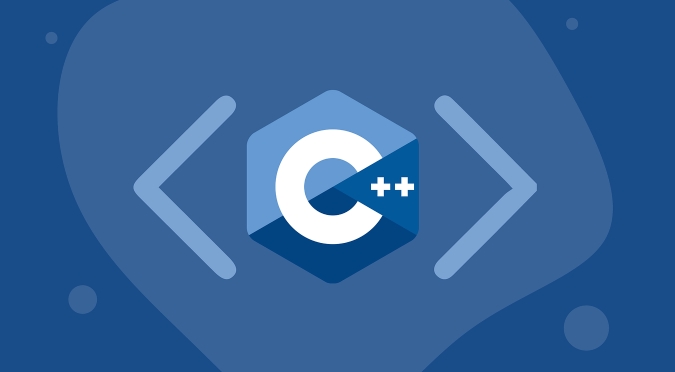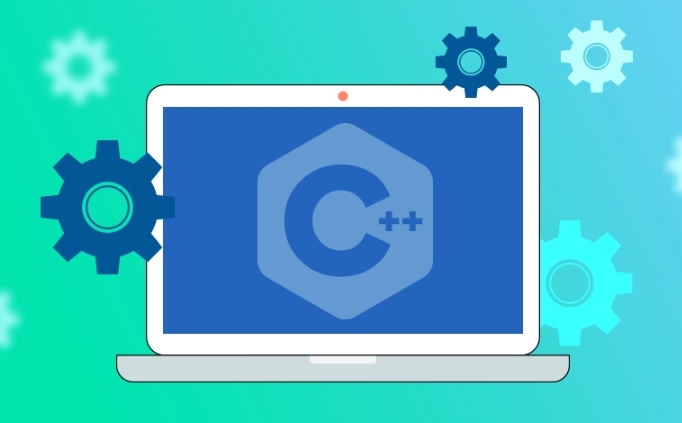C's static member variables and functions belong to classes rather than objects and are shared among all instances. static member variables are used to save the status information of the class. For example, object counting, which must be defined outside the class, such as counting the number of objects created; static member functions can access static members, suitable for tool methods, singleton mode and other scenarios, but cannot access non-static members; when using it, you need to pay attention to issues such as initialization order, life cycle, thread safety, and access permissions; typical applications include object counting, global configuration management, tool classes, singleton mode and resource cache.

C's static member variables and functions are shared resources at the class level and do not depend on object instances. That is to say, no matter how many objects are created, the static member has only one copy and is shared by all objects. This is very practical in designing tool classes, counters, singleton modes and other scenarios.

What are static member variables?
static member variable belongs to the entire class, not an object of the class. It is shared among all objects of the class and is often used to save the status information of the class.

For example, if you want to count how many objects a certain class has created:
class MyClass {
private:
static int count; // Declare public:
MyClass() { count; }
static int getCount() { return count; }
};
int MyClass::count = 0; // Definition In this way, every time a MyClass object is constructed, count will increase automatically. You can access directly through the class name: MyClass::getCount() .

Note: The static variable must be defined separately outside the class, otherwise an error will be reported during linking.
What is the function of static member functions?
static member functions can only access static member variables and other static functions. They do not have this pointer, so they cannot access non-static members.
Uses include:
- Provides functionality that is related to a class but does not require object context
- Access static data
- Implement factory methods, singleton and other design models
For example:
class Logger {
private:
static std::string logFile;
public:
static void setLogFile(const std::string& file) { logFile = file; }
static void log(const std::string& message) {
std::ofstream out(logFile, std::ios::app);
out << message << std::endl;
}
}; In this example, both log and setLogFile are static functions that can control log behavior globally without instantiating objects.
What should I pay attention to when using static members?
There are several common pitfalls to be paid attention to when using static members:
- Initialization order problem : The initialization order of static variables in different translation units is uncertain, which may lead to undefined behavior.
- Lifecycle management : static variables are destroyed at the end of the program. If complex resource management is involved (such as file handles, network connections), you must be handled with caution.
- Thread safety : Multiple threads modify static members at the same time may cause race conditions, and it is recommended to add locks or use atomic operations to protect them.
- Access permissions : Even if declared as private, static members can still be accessed through friend or public functions.
If you define the inline const or constexpr static variable in a header file, it can be initialized directly within the class without additional definitions.
What are the applicable scenarios for static members?
Some typical usage scenarios include:
- Object counter : records the number of instances of a certain class.
- Global configuration/state management : such as game settings, log switches, etc.
- Tool function collection : general functions such as mathematical operations and string processing.
- Singleton pattern implementation : Use static function to return a unique instance.
- Resource cache : such as database connection pool, image cache, etc.
To give a simple example:
class MathUtils {
public:
static int square(int x) { return x * x; }
static double pi() { return 3.1415926; }
}; This kind of tool class usually does not require instantiation, just call it directly: MathUtils::square(5);
Basically that's it. static members are not particularly difficult to understand, but details are easily overlooked in actual development, especially initialization and multithreading aspects. Rational use can improve the code structure, while excessive use may cause problems such as high coupling and difficulty in testing.
The above is the detailed content of C static member variables and functions. For more information, please follow other related articles on the PHP Chinese website!

Hot AI Tools

Undress AI Tool
Undress images for free

Undresser.AI Undress
AI-powered app for creating realistic nude photos

AI Clothes Remover
Online AI tool for removing clothes from photos.

Clothoff.io
AI clothes remover

Video Face Swap
Swap faces in any video effortlessly with our completely free AI face swap tool!

Hot Article

Hot Tools

Notepad++7.3.1
Easy-to-use and free code editor

SublimeText3 Chinese version
Chinese version, very easy to use

Zend Studio 13.0.1
Powerful PHP integrated development environment

Dreamweaver CS6
Visual web development tools

SublimeText3 Mac version
God-level code editing software (SublimeText3)

Hot Topics
 How to handle high DPI display in C?
Apr 28, 2025 pm 09:57 PM
How to handle high DPI display in C?
Apr 28, 2025 pm 09:57 PM
Handling high DPI display in C can be achieved through the following steps: 1) Understand DPI and scaling, use the operating system API to obtain DPI information and adjust the graphics output; 2) Handle cross-platform compatibility, use cross-platform graphics libraries such as SDL or Qt; 3) Perform performance optimization, improve performance through cache, hardware acceleration, and dynamic adjustment of the details level; 4) Solve common problems, such as blurred text and interface elements are too small, and solve by correctly applying DPI scaling.
 How to understand DMA operations in C?
Apr 28, 2025 pm 10:09 PM
How to understand DMA operations in C?
Apr 28, 2025 pm 10:09 PM
DMA in C refers to DirectMemoryAccess, a direct memory access technology, allowing hardware devices to directly transmit data to memory without CPU intervention. 1) DMA operation is highly dependent on hardware devices and drivers, and the implementation method varies from system to system. 2) Direct access to memory may bring security risks, and the correctness and security of the code must be ensured. 3) DMA can improve performance, but improper use may lead to degradation of system performance. Through practice and learning, we can master the skills of using DMA and maximize its effectiveness in scenarios such as high-speed data transmission and real-time signal processing.
 How to understand ABI compatibility in C?
Apr 28, 2025 pm 10:12 PM
How to understand ABI compatibility in C?
Apr 28, 2025 pm 10:12 PM
ABI compatibility in C refers to whether binary code generated by different compilers or versions can be compatible without recompilation. 1. Function calling conventions, 2. Name modification, 3. Virtual function table layout, 4. Structure and class layout are the main aspects involved.
 How to use the chrono library in C?
Apr 28, 2025 pm 10:18 PM
How to use the chrono library in C?
Apr 28, 2025 pm 10:18 PM
Using the chrono library in C can allow you to control time and time intervals more accurately. Let's explore the charm of this library. C's chrono library is part of the standard library, which provides a modern way to deal with time and time intervals. For programmers who have suffered from time.h and ctime, chrono is undoubtedly a boon. It not only improves the readability and maintainability of the code, but also provides higher accuracy and flexibility. Let's start with the basics. The chrono library mainly includes the following key components: std::chrono::system_clock: represents the system clock, used to obtain the current time. std::chron
 How to optimize code
Apr 28, 2025 pm 10:27 PM
How to optimize code
Apr 28, 2025 pm 10:27 PM
C code optimization can be achieved through the following strategies: 1. Manually manage memory for optimization use; 2. Write code that complies with compiler optimization rules; 3. Select appropriate algorithms and data structures; 4. Use inline functions to reduce call overhead; 5. Apply template metaprogramming to optimize at compile time; 6. Avoid unnecessary copying, use moving semantics and reference parameters; 7. Use const correctly to help compiler optimization; 8. Select appropriate data structures, such as std::vector.
 What is real-time operating system programming in C?
Apr 28, 2025 pm 10:15 PM
What is real-time operating system programming in C?
Apr 28, 2025 pm 10:15 PM
C performs well in real-time operating system (RTOS) programming, providing efficient execution efficiency and precise time management. 1) C Meet the needs of RTOS through direct operation of hardware resources and efficient memory management. 2) Using object-oriented features, C can design a flexible task scheduling system. 3) C supports efficient interrupt processing, but dynamic memory allocation and exception processing must be avoided to ensure real-time. 4) Template programming and inline functions help in performance optimization. 5) In practical applications, C can be used to implement an efficient logging system.
 The difference between programming in Java and other languages ??Analysis of the advantages of cross-platform features of Java
May 20, 2025 pm 08:21 PM
The difference between programming in Java and other languages ??Analysis of the advantages of cross-platform features of Java
May 20, 2025 pm 08:21 PM
The main difference between Java and other programming languages ??is its cross-platform feature of "writing at once, running everywhere". 1. The syntax of Java is close to C, but it removes pointer operations that are prone to errors, making it suitable for large enterprise applications. 2. Compared with Python, Java has more advantages in performance and large-scale data processing. The cross-platform advantage of Java stems from the Java virtual machine (JVM), which can run the same bytecode on different platforms, simplifying development and deployment, but be careful to avoid using platform-specific APIs to maintain cross-platformity.
 How to reduce the use of global variables in C?
May 23, 2025 pm 09:03 PM
How to reduce the use of global variables in C?
May 23, 2025 pm 09:03 PM
Reducing the use of global variables in C can be achieved by: 1. Using encapsulation and singleton patterns to hide data and limit instances; 2. Using dependency injection to pass dependencies; 3. Using local static variables to replace global shared data; 4. Reduce the dependence of global variables through namespace and modular organization of code.






